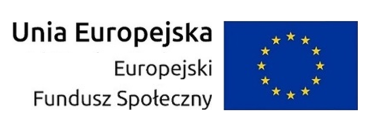Cotygodniowe seminarium badawcze
Lista referatów
-
7 marca 2012 16:15
Urszula Foryś (Uniwersytet Warszawski)
On some SIRC epidemic model and vaccination strategies
We consider a model of SIRC type, taking into account four groups: susceptible, infected, removed and carriers. We study the dynamics in two interesting cases: when a positive steady state does not exist and when …
-
29 lutego 2012 16:15
Tatyana Ryabukha (Institute of Mathematics, National Academy of Sciences of Ukraine and MIMUW)
Equilibrium solutions for a microscopic model of population dynamics
Mirosław Lachowicz (MIMUW)Introduction to Tatiana's talkIn the talk, the problem of existence and uniqueness of equilibrium solutions to a microscopic model of population dynamics will be discussed. The model is a modified Liouville equation corresponding …
-
-
18 stycznia 2012 16:15
Jędrzej Jabłoński (Uniwersytet Warszawski)
Modeling mortality of a size-structured population using optimization approach to predator's behaviour (case of fish and Daphnia)
Existing models of fish predation are either descriptive or lack realistic assumptions on predator's motion. Presented model fills this gap. The pure optimization approach gives answers not only about prey mortality, but also about predator's …
-
14 grudnia 2011 16:15
Tatiana Ryabukha (Institute of Mathematics, National Academy of Sciences of Ukraine and MIMUW)
The Liouville Equation for a Stochastic Particle System
-
7 grudnia 2011 16:15
Marek Bodnar (Uniwersytet Warszawski)
Friction dominated dynamics of interacting particles locally close to a crystallographic lattice towards conclusion but of course self contained
-
30 listopada 2011 16:15
Marek Bodnar (Uniwersytet Warszawski)
Friction dominated dynamics of interacting particles locally close to a crystallographic lattice. Self-contained continuation
-
23 listopada 2011 16:15
Karol Wawrzyniak (ICM UW & National Centre for Nuclear Research)
On Phenomenology, Dynamics and some Applications of the Minority Game
Minority game (MG) was designed as a microscopic model of adaptive behavior observed in multi-agent systems where being in minority is profitable. It was shown that the MG exhibits different modes of behavior, depending on …
-
16 listopada 2011 16:15
Marek Bodnar (Uniwersytet Warszawski)
Friction dominated dynamics of interacting particles locally close to a crystallographic lattice
We study a system of particles, in general d-dimensional space, that interact by means of pair potential and adjust their positions according to the gradient flow dynamics induced by the total energy of the system. …
-
19 października 2011 16:15
Roman Cherniha, (Institute of Mathematics of NASU, National University 'Kyiv-Mohyla Academy ')
Mathematical model for fluid-glucose-albumin transport in dialysis and its steady-state solutions
Mathematical description of fluid and solute transport between blood anddialysis fluid in the peritoneal cavity has not been formulated fully yet,in spite of the well known basic physical laws for such transport. Recentmathematical, theoretical and …
-
12 października 2011 16:15
Maria Vela-Perez (IE University, Segovia)
Geodesic paths in simple graphs for some social insects
Social insects are an important example of complex collective behavior.In particular, ant colonies develop diff erent tasks as foraging, buildingand allocation [1]. While they search for food they deposit a pheromonethat it is considered as …
-
1 czerwca 2011 16:15
Tatiana Ryabukha (Institute of Mathematics, National Academy of Sciences of Ukraine and MIMUW)
Non-equilibrium cluster expansions in the theory of many-particle dynamical systems
This talk deals with analytical methods in statistical mechanics. It'sgoal is to give a deductive presentation of the statistical mechanics ofnonequilibrium systems based on BBGKY hierarchy studying - description ofthe evolution of states - as …
-
25 maja 2011 16:15
Adam Bobrowski (Politechnika Lubelska)
From diffusions on graphs to Markov chains via asymptotic state lumping
We show that finite-state Markov chains may be approximated by fastdiffusions on finite graphs with semi-permeable membranes on vertices.The approximation involves a singular perturbation with singularity inboth operator and boundary/transmission conditions. The result ismotivated by …
-
18 maja 2011 16:15
Tadeusz Płatkowski (Uniwersytet Warszawski)
Game dynamics for players with complex personalities
We consider populations of individuals who are engaged in n--person publicgood games or in two--person non symmetric or symmetric social dilemmagames. The players imitate the most attractive strategies, and the choiceis motivated not only by …
-
4 maja 2011 16:15
Urszula Foryś (Uniwersytet Warszawski)
More on linear differential systems with small delays
We'll study the aysymptotic dynamics of linear systems of DDEs with small delays. It can be shown that asymptotically such systems behave as the so-called special solutions and for linear DDEs these solutions coincide with …
 Nie jesteś zalogowany |
Nie jesteś zalogowany |



















